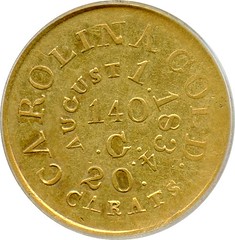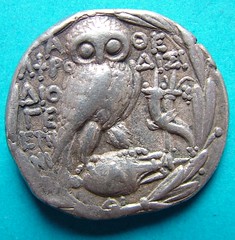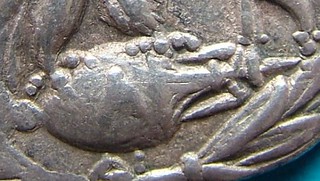
PREV ARTICLE
NEXT ARTICLE
FULL ISSUE
PREV FULL ISSUE
MORE NUMISMATIC ITEMS DATED BY MONTHC. Bechtler $5 August 1, 1834
Christian Bechtler was a coiner in Rutherford, NC. The US Government had announced that new gold coins would bear the date "August 1, 1834" to distinguish new tenor coins from the old. Instead the government coined a new design and scrapped the oddball date idea. Christian Bechtler put the date on his new dies and used them for a time. I'd forgotten about that one! Thanks! -Editor
For more information on the Bechtler Mint, see:
Turkish 1 million Lira (KM 1139.1)
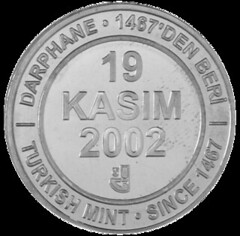 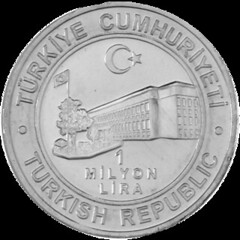 George Cuhaj writes: This is an illustration of KM 1139.1 It was struck at a press at the Istanbul mint money museum. It has the date, month in Turkish, and year. It was used for 8 months in 2002. There is a second variety used during the whole of 2003, where the reverse die has the date, month in both Turkish and English, and the year. The denomination was 1 million Lira, in their old system which was replaced in 2005. 11.87g, Brass center in Copper-Nickel ring. 32.1mm Jeff Starck of Coin World also thought of this coin. He writes: Earlier this century, Turkey allowed visitors to the mint to strike coins with the date they visited. You can see this in an image posted at dealer Bob Reis’ website (www.anythinganywhere.com). He offers a ringed bimetallic 1 million lira coin. Clearly these were issued as commemoratives, aimed at visitors and meant to be souvenirs. But you can’t get much more specific than the actual day of striking! 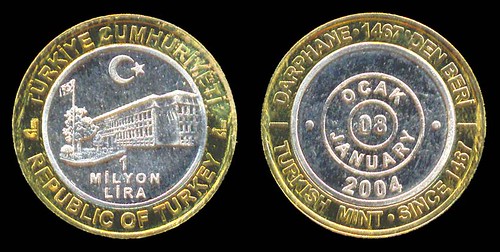 TURKEY, REPUBLIC, bimetallic 1 million lira K1139.2? 2004 January 08, Unc $8.50 Struck by a coin operated machine at the mint museum and bearing the date of issue. Supposedly there was a mintage of 500 maximum per day. Day dated coins have been made at other times and in other places, but the practice is rare. In 2005 Turkey dumped the inflated lira and issued a new one tied to the USA dollar. To view the image on Bob's site, see:
Athenian Tetradrachms
The sequence of the magistrates is known from other sources, although various scholars have argued over the base date from which the sequence starts. Margaret Thompson, in her "New Style Silver Coinage of Athens", which is regarded as the standard work, proposes a start date of 196 BC.
Greek months were lunar, and should therefore have been arranged along the lines stated last week; namely, twelve ordinary {12-month} and seven leap {13-month} years spread evenly over every nineteen years. Would-be magistrates no doubt coveted a leap year for their period of office, as it would give them another 29-30 days of power, and there are irregularities in the sequence of years containing intercalary coins {month 13} which imply that personal political ambition was occasionally allowed to take preference over the correct workings of the calendar; for example, by declaring a second leap year after one had just finished. This, if allowed to continue for even a very short time, rapidly throws the seasons out of sync. The magic letter for one of these embolismic coins, indicating month 13, is N. Thanks, everyone! Great topic! -Editor
To read the earlier E-Sylum article, see:
 Wayne Homren, Editor The Numismatic Bibliomania Society is a non-profit organization promoting numismatic literature. See our web site at coinbooks.org. To submit items for publication in The E-Sylum, write to the Editor at this address: whomren@gmail.com To subscribe go to: https://my.binhost.com/lists/listinfo/esylum All Rights Reserved. NBS Home Page Contact the NBS webmaster 
|
